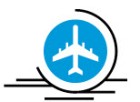 FLY AMERICA ACT
FLY AMERICA ACT
All international travel, funded by the federal government must meet the Fly America Act guidelines. The Fly America Act Guidelines dictate that all travel must be via a U.S. flag air carrier (including the use of code share flights) to the furthest point towards their final destination.
With the many code sharing arrangements among airlines, compliance can be both complicated and difficult to monitor. If a traveler is flying under the Fly America Act and they select a foreign carrier, a justification form typically is completed. Some exceptions that may apply include:
- When there is no nonstop or direct service offered by a U.S. carrier
- When travel solely outside the US increases the number of aircraft changes en route to more than two
- When the passenger's travel time is extended by a least 6 hours
- When the connecting time is 4 hours or more at an overseas interchange point.
Open Skies Agreement
The Open Skies Agreement is an exception to the Fly America Act.
The U.S. Government has entered into several agreements that allow federal funded transportation services for travel to use foreign air carriers under certain circumstances. There are currently four bilateral/multilateral Open Skies Agreements in effect: European Union, Australia, Switzerland and Japan.
When an Open Skies Agreement is in place between the United States and the government of foreign country, a foreign carrier can be used if:
- It’s airline is a member state carrier
- Transportation is
- Between the U.S. and any point in the member state
- Between two points outside the U.S. provided that funding is not provided by the Secretary of Defense or the Secretary of a military department.
Further Resources (click links below):

